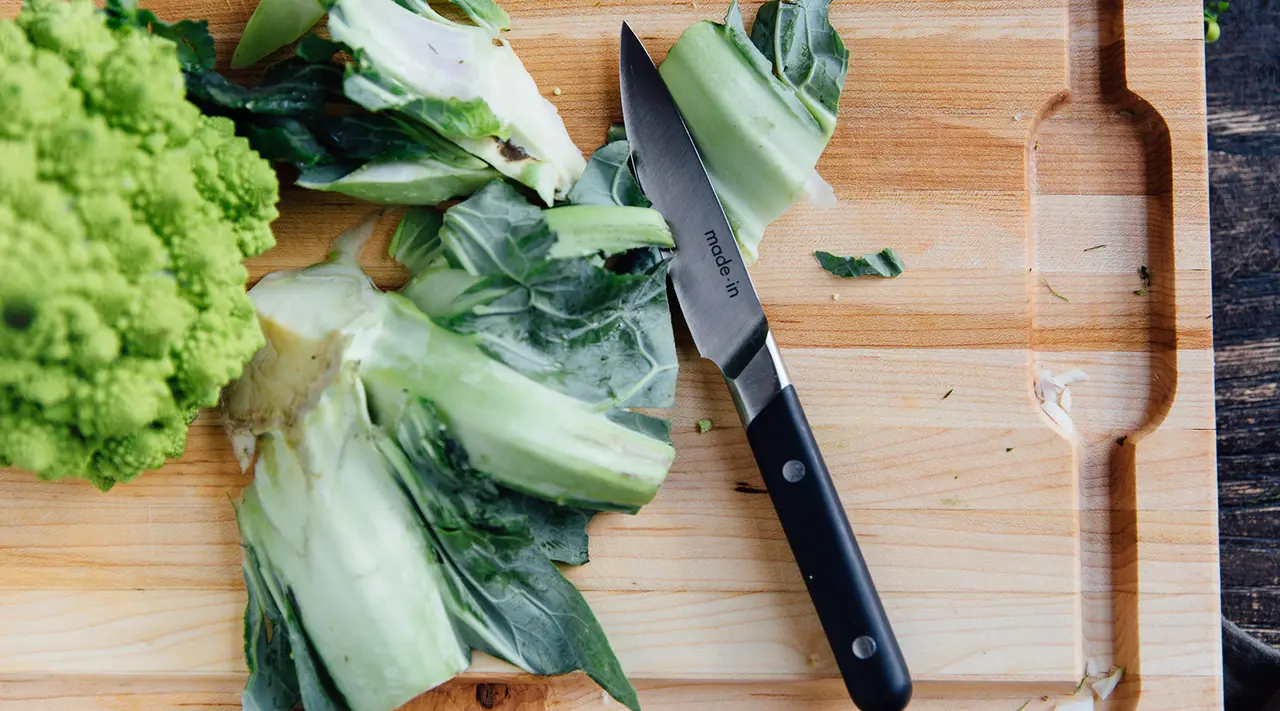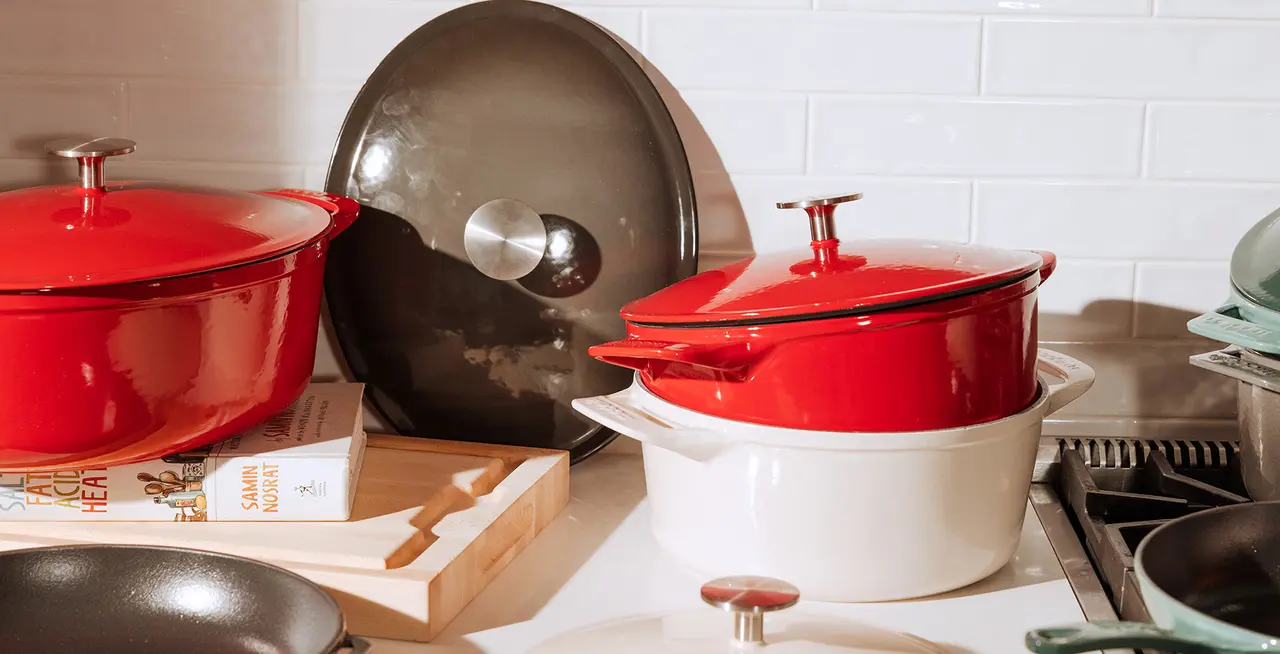Resembling a hawk’s short, hooked beak, the aptly named bird’s beak paring knife—also called tourné knife—bears only a slight resemblance to the typical, straight-edge paring knife you likely have in a drawer somewhere. The bird's beak knife plays a vital role in many restaurant kitchens, where cooks use it to trim, peel, and create delicate shapes out of fruits and vegetables. If you’ve ever seen a radish rose or on your plate, there’s a good chance a bird’s beak knife was behind it.
This tiny but powerful tool can be just as useful to a home cook as it can to one in a restaurant. To prove it, we’ve compared the bird’s beak side-by-side with a standard paring knife to show you all the ways it can complement your knife collection.
What Is a Bird’s Beak Paring Knife?

If you watched season 2, episode 7 of Hulu’s "The Bear," you may have spied Olivia Colman using a bird’s beak knife to peel a pile of mushrooms by hand in the kitchen of her (fictional) world-famous Chicago restaurant. This knife is, indeed, a requisite in most high-end kitchens: Because of the knife’s small size and curved, razor-sharp blade, the bird’s beak is used to peel, core, and trim fruits and vegetables with incredible precision.
Despite its fine dining origins, however, a bird’s beak can work just as well for the home cook. Not only can it peel rounded or irregularly-shaped items (like mushrooms) with ease and with minimal waste, but it can also remove garlic and onion skins with ease, devein shrimp, and even separate stone fruit from their stubborn pits. If you’re trying to accomplish the perfect at-home old fashioned, try using the bird’s beak for peeling citrus rind—you’ll thank us later.
What Is a Paring Knife?

The straight edge paring knife—also called the petty knife—is the bird’s beak knife’s plainer, more pedestrian sibling (and the one many people probably have in their kitchens). Measuring around 4” long on average, It looks almost exactly like a miniature chef’s knife, with a straight spine and slightly curved blade.
Because of its size, this knife maneuvers easily around oddly-shaped fruits and vegetables, making it the perfect tool for jobs like peeling knobby bits of ginger, hulling strawberries, and cutting the eyes out of potatoes. It’s also useful for mincing garlic and herbs or segmenting citrus—basically anything that involves small, detailed cuts.
Do You Need Both?

We know—you’re probably not going to be tournéing potatoes, peeling grapes, or carving radish roses on a weekly basis (or possibly ever). Yet the bird’s beak knife is still incredibly useful to have on hand: Not only can you trim vegetables like artichokes, green beans, and brussels sprouts with less waste, but the razor-thin blade also slips easily under fruit and vegetable skins, making it a worthy (not to mention cheffy-feeling) replacement for a vegetable peeler.
As handy as the bird’s beak is, however, it doesn’t outright replace a straight edge paring knife. While the bird’s beak is primarily used for hand-held tasks, a straight edge paring knife is better suited to cutting board tasks like mincing garlic or herbs, which require a flat surface and straight up-and-down chopping motion. That’s why we recommend having both kinds of knives to work with—especially if you love spending time in the kitchen.
Ready to Shop?
If you’re just now adding a paring knife to your knife collection, a bird’s beak knife might seem a bit too specialized for regular home use. Yet once you’ve seen all the perfectly peeled apples, waste-free hulled strawberries, and citrus segments this knife can turn out, we think you’ll understand why we love our Bird’s Beak Paring Knife.
Because the Bird’s Beak features a heavier handle to offset the lightweight blade, it stays balanced in the hand while allowing you to make nimble, elegant cuts. And like our straight-edge Paring Knife, the Bird’s Beak is also full-tang and fully forged, making for a more durable and long-lasting knife.
























